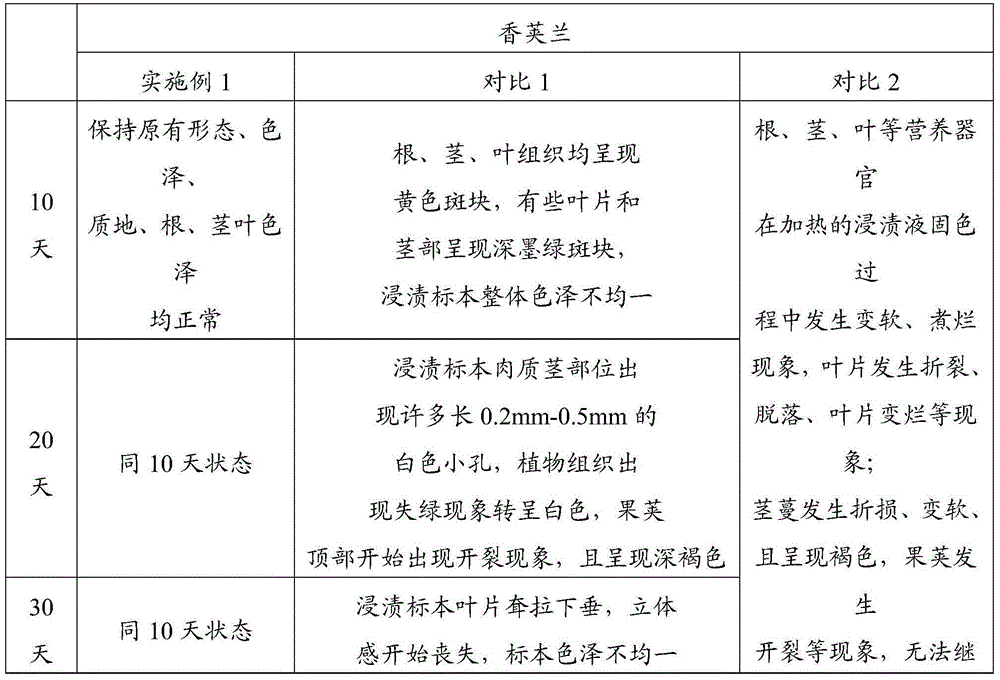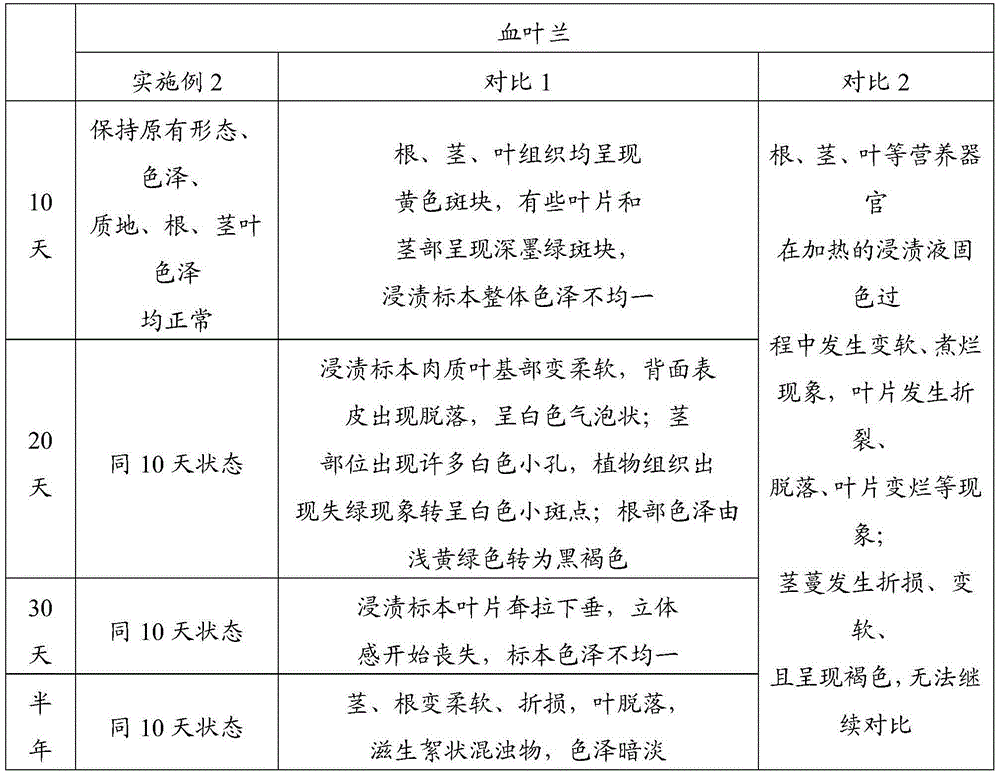Preparation method for orchidaceae succulent plant dipping specimen
A technique for dipping specimens and plants, which is applied in the field of preparation of dipping specimens of succulent orchids, can solve the problems that the succulent orchids cannot achieve a realistic image, a strong three-dimensional sense, and the succulent orchids cannot maintain the original shape, color and texture for a long time.
- Summary
- Abstract
- Description
- Claims
- Application Information
AI Technical Summary
Problems solved by technology
Method used
Image
Examples
Embodiment 1
[0032] Example 1: Preparation of Vanilla Dipping Specimens
[0033] The picked plant type is neat, the leaves are complete, the stem maturity is about 80%-90%, the fruit pod maturity is about 75%-85%, the length is 15cm-22cm, and the part with a width of 7cm-11cm is used as the specimen material, trimmed and shaped, Remove yellowed, diseased leaves, stems and other parts, clean the dust with distilled water, put it in 75% ethanol solution for 10 minutes for disinfection, and wash it with distilled water 3 times;
[0034] Submerge the sterilized specimen in saturated lime solution for 36 hours (not more than 72 hours, otherwise the specimen will turn yellow and rot) to achieve the hardening effect; use hot water at 95°C for 60 seconds, take out the specimen immediately and put it on a tray covered with white gauze to cool. After cooling, wash with distilled water for 3 times; after cooling, immerse the specimen in 20% copper sulfate aqueous solution for 72 hours to achieve the ...
Embodiment 2
[0036] Embodiment 2: prepare blood leaf orchid dipping specimen
[0037] Collect fresh blood leaf orchid specimen materials with complete leaves, stems and roots, length 10cm-20cm, width 5cm-10cm, trim neatly, remove dead leaves, diseased leaves, and withered roots, clean the dust with distilled water, and put in 75% ethanol After being disinfected in the solution for 15 minutes, wash with distilled water for 3 times;
[0038] Submerge the sterilized specimens in saturated lime solution for 24 hours (not more than 72 hours, otherwise the specimens will turn yellow and rot) to achieve the hardening effect; use hot water at 90°C for 90 seconds, immediately take out the specimens and place them on a tray covered with white gauze to cool. After cooling, wash with distilled water for 3 times; after cooling, immerse the specimen in 18% by mass copper sulfate aqueous solution for 84 hours to achieve color fixation, wash with distilled water for 3 times, and transfer to 15% by volume ...
Embodiment 3
[0040] Embodiment 3: prepare dendrobium dendrobium dipping specimen
[0041] Collect fresh dendrobium dendrobium specimen materials with complete leaves, stems and roots, length 8cm-15cm, width 5cm-10cm, trim neatly, remove dead leaves, diseased leaves, and withered roots, clean the dust with distilled water, and put in 75% ethanol After being disinfected in the solution for 15 minutes, wash with distilled water for 3 times;
[0042] Submerge the sterilized specimen in saturated lime solution for 48 hours (not more than 72 hours, otherwise the specimen will turn yellow and rot) to achieve the hardening effect; use 100°C hot water for 75 seconds, immediately take out the specimen and put it on a tray covered with white gauze to cool. After cooling, wash with distilled water for 3 times; after cooling, immerse the specimen in 15% copper sulfate aqueous solution for 96 hours to achieve color fixation, wash with distilled water for 3 times, and transfer to 13% by volume of sulfuro...
PUM
 Login to View More
Login to View More Abstract
Description
Claims
Application Information
 Login to View More
Login to View More - R&D Engineer
- R&D Manager
- IP Professional
- Industry Leading Data Capabilities
- Powerful AI technology
- Patent DNA Extraction
Browse by: Latest US Patents, China's latest patents, Technical Efficacy Thesaurus, Application Domain, Technology Topic, Popular Technical Reports.
© 2024 PatSnap. All rights reserved.Legal|Privacy policy|Modern Slavery Act Transparency Statement|Sitemap|About US| Contact US: help@patsnap.com










